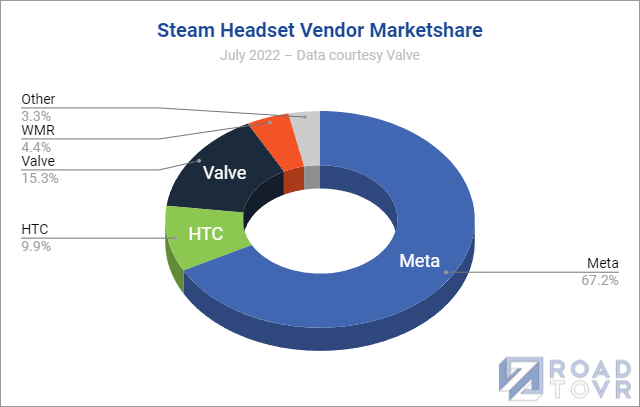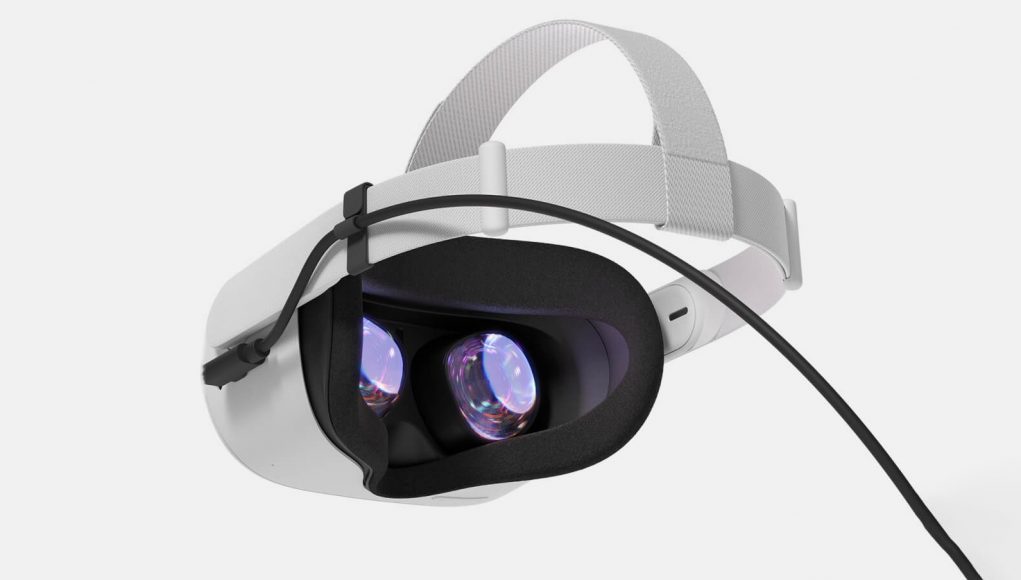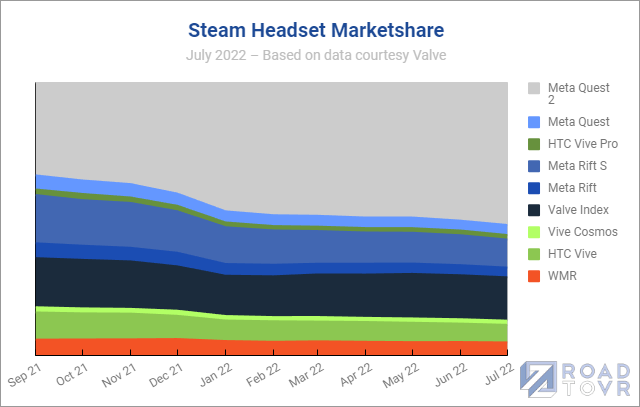Quest 2 quickly rose to become the most-used VR headset on Steam, but last month it crossed a new milestone as the majority of headsets used on the platform.
Quest 2’s aggressive price point and ability to be used as both a standalone and PC VR headset propelled it to become the most-used VR headset on Steam back in February 2021, just four months after its launch.
From there it has only continued to grow, and now the latest data from Valve’s Steam Survey shows that Quest 2 now makes up the majority of headsets on the platform at 50.32% (+1.3%).
Of course Quest 2 isn’t the only Meta headset used on Steam. Quest 2, Quest 1, Rift S, and Rift collectively grew slightly in the last month to 67.16% (+0.48%), with the vendor’s overall gains otherwise reduced by the Rift S dropping to 9.88% (−0.72%). That sees Meta continuing to hold more than two thirds of the VR headsets on Steam.
 Though Quest 2 has definitely grown quickly, the headset’s recent price increase will probably reduce its growth rate compared to what we’ve seen so far.
Though Quest 2 has definitely grown quickly, the headset’s recent price increase will probably reduce its growth rate compared to what we’ve seen so far.
While the portion of individual headsets used on Steam appears to be correct in the latest round of data from Valve, the total portion of Steam users using VR headsets has been fluctuating wildly in the last few months, apparently erroneously. We’ve reached out to Valve on multiple occasions for comment on the issue but have yet to receive a response.








